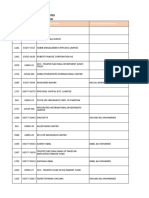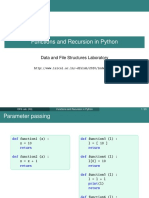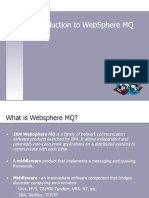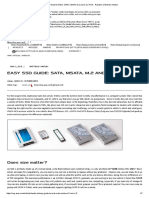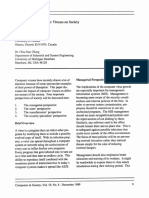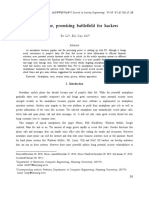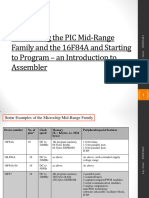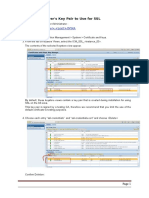0% found this document useful (0 votes)
368 views36 pagesImplementing and Detecting An ACPI BIOS Rootkit
This document discusses implementing and detecting an ACPI BIOS rootkit. It begins by explaining what the BIOS and rootkits are. It then discusses why targeting the BIOS is advantageous for a rootkit. The document outlines some difficulties for rootkit writers targeting the BIOS and provides an overview of the Advanced Configuration and Power Interface (ACPI) specification. It describes how an ACPI rootkit could abuse ACPI tables and operations to inject malicious code and achieve persistence across system reboots and reinstallations. Finally, it discusses some methods for detecting and preventing ACPI rootkits, such as auditing ACPI tables and runtime analysis of ACPI messages.
Uploaded by
phoebus almasyCopyright
© © All Rights Reserved
We take content rights seriously. If you suspect this is your content, claim it here.
Available Formats
Download as PDF, TXT or read online on Scribd
0% found this document useful (0 votes)
368 views36 pagesImplementing and Detecting An ACPI BIOS Rootkit
This document discusses implementing and detecting an ACPI BIOS rootkit. It begins by explaining what the BIOS and rootkits are. It then discusses why targeting the BIOS is advantageous for a rootkit. The document outlines some difficulties for rootkit writers targeting the BIOS and provides an overview of the Advanced Configuration and Power Interface (ACPI) specification. It describes how an ACPI rootkit could abuse ACPI tables and operations to inject malicious code and achieve persistence across system reboots and reinstallations. Finally, it discusses some methods for detecting and preventing ACPI rootkits, such as auditing ACPI tables and runtime analysis of ACPI messages.
Uploaded by
phoebus almasyCopyright
© © All Rights Reserved
We take content rights seriously. If you suspect this is your content, claim it here.
Available Formats
Download as PDF, TXT or read online on Scribd
/ 36




















